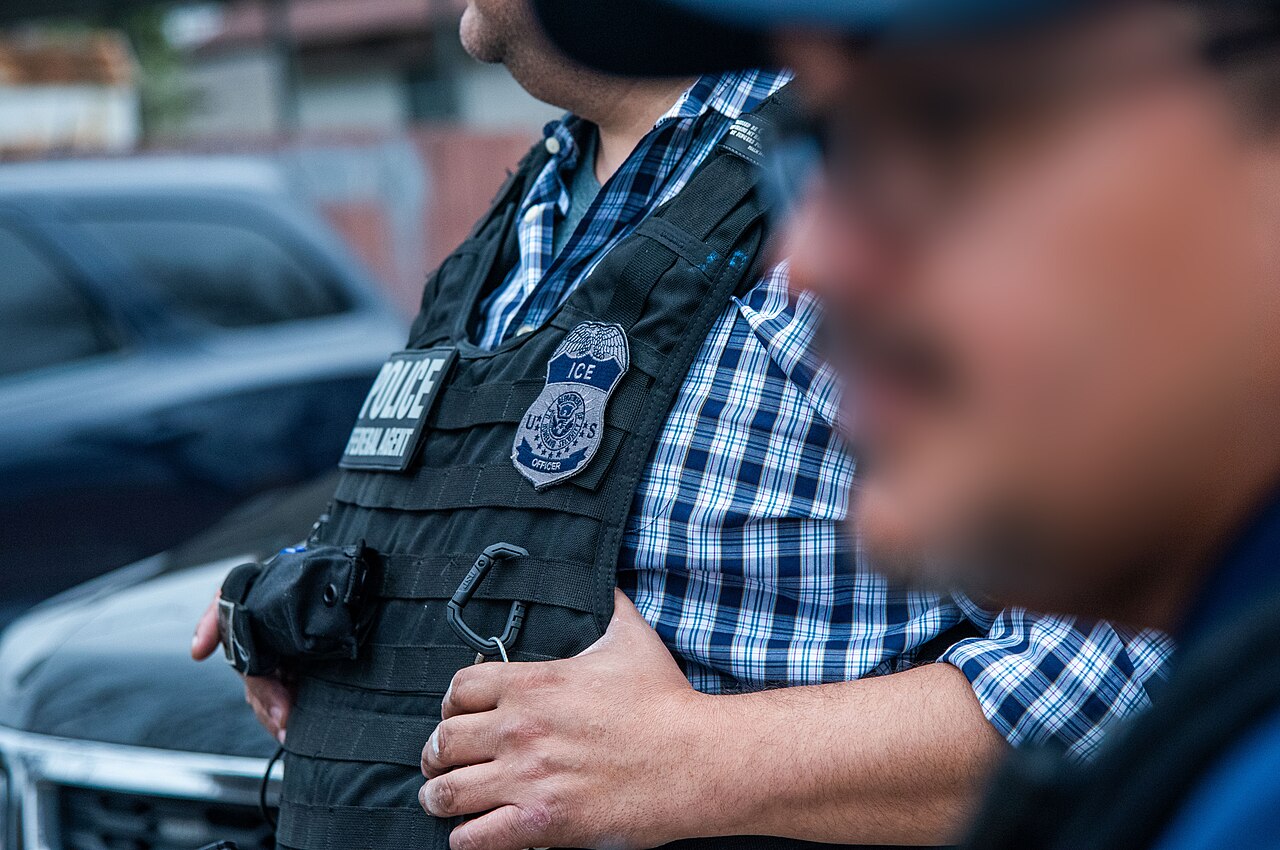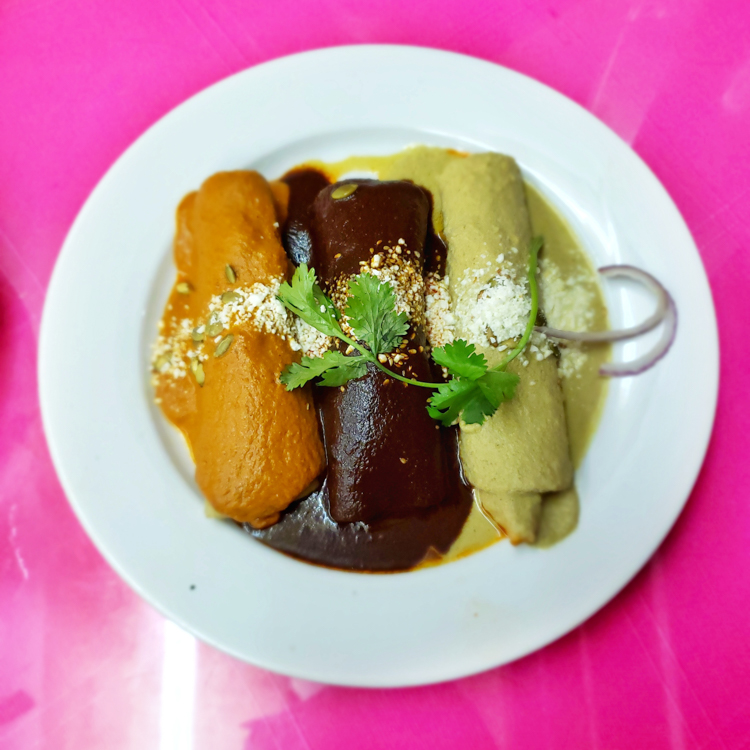After Miguel crooned “Remember Me” to Grandma Coco and made the whole world cry in 2017, it was over.
Mexico’s Day of the Dead and its imagery officially crossed into the American mainstream that year. It was long coming, and overall I welcome it: at a time when the former (and possibly future) president refers to Mexicans as a threat to Americans, positive popular images and themes related to our neighboring country and the root of many of our lives can't be anything but good.
Anyone can relate to the concept of honoring one's ancestors, which is why anyone can celebrate Day of the Dead.
By now, after years in which Southern California has led the way in spreading Muertos-cheer to non-Mexicans, the holiday’s sugar skulls and bright cempasúchil flowers adorn products available from Walmart to Etsy, from Pinterest to your town’s tackiest sexy Halloween costume store. There’s no turning back. I mean, there’s already a Coco-inspired "Disney on Ice" show out there.

You can fume and feel holier-than-thou all you want about it because there are certainly debatable consequences, as we’ve seen with St. Patrick’s Day and Cinco de Mayo. Often the best defense of a valued tradition is to practice it without fail to its purest intent—no matter how anyone else might butcher or exploit it.
But you don’t have a lot of time. Your ofrenda ("offering") will need to go up ASAP. If it isn't, Angelenos of true mettle have just some hours to go to get their stuff together and leave something out for their departed on November 1 and 2.

Here’s what you need to complete a Dia de los Muertos ofrenda today, in broad strokes. Most of these items will be available at any Latin supermarket like Northgate or Superior, at swap meets, or at markets like El Mercadito in Boyle Heights.
Just keep in mind that—as folk traditions tend to go—there are no hard rules on what to include on a Dia de los Muertos altar. Some indigenous communities, for example, frown upon the use of sugar skulls. Ofrendas are much different in an arid town in Chihuahua than they might be in the coffee-producing mountains of Chiapas. The tradition is always morphing and changing. And anyway, you’re supposed to actually build an ofrenda at the cemetery, over the grave, and stay there all night drinking and playing music.
Finally, remember that an altar at a store or shopping mall is a sales pitch for something, while an ofrenda made at home is usually an intimate, modest offering, meant at its core for an audience that is no longer physically with us...
RELATED: Dia de los Muertos Festival ~ Uptown Whittier

Structure
First, the architecture. Your ofrenda should have at least two to three levels, preferably starting from the floor. Place “earthy” elements to your ofrenda there, like a small or miniature petate (so the souls can lay down and rest). Use a table, stool, or even a chair to give your ofrenda the necessary levels. The very top perch should hold the photos of the departed that you’re honoring, while the middle areas will have the edible items and candles. Use a sarape, blanket, or any fabric to cover the levels.

Cempasúchil
The “Mexican marigold” is native to southeastern Mexico and is the key decorative element besides candles on any ofrenda. Get as much of that glorious gold bloom as you can. I got a bundle for $25 at G&J Flower Distributors on San Julian Street in the Flower District. You’ll also spot flower vendors selling them on street corners, as I did recently on Alameda Street and on La Brea Avenue.
Clip the flowers just at the stem and use the bulbs to adorn all along the edges of the levels. Use loose petals to form an external “pathway” to the foot of the structure, to guide the souls in. Others use petals to make elaborate decorative art on the ground around the ofrenda, such as crosses or skulls.

Candles and Copal
Illuminate the altar with candles (preferably white) burning overnight. If you can get some good copal, that aromatic resin that reminds one so much of Mexico, use it. Remember, the first day is reserved for children, or little souls, who left too soon. After midnight, the older souls visit. But in practice, the days just meld together. Stay up and “talk” with them, think about them, sing their favorite songs, and smoke and drink their favorite imbibements.
Liquor
Speaking of imbibing stuff, add a small caballito or jícara of tequila or mezcal, depending on your native region. Other spirits like scotch, bourbon, or vodka are permissible if the departed really liked one of those. Doesn’t matter. As long as it’s a drink.
RELATED: The Fire of Mezcal, Mexico's Mythical Spirit

Photographs
Frame and position photographs of people you’ve lost. In past years I’ve included my Tía Ana, who was like a second mother to me, and friends, like Quetzal Rangel, a promising fashion designer. I've also used my ofrenda to honor prominent creative leaders whose losses feel like actual voids, like Prince (RIP). Think about writers, artists, leaders who’ve gone. Who do you honor in your day-to-day life? Who’s left a hole in our hearts recently? I’m thinking about Jonathan Gold...
Water and Salt
Place a cup or glass of water. The dead you are honoring will be thirsty after the journey from the spirit realm to your living room. Also, put out a pinch of salt in a small container.
Pan de Muerto
No holiday happens in Mexico without a corresponding date-specific treat. We do pozole for Fiestas Patrias, tamales for Christmas, rosca de reyes on Three Kings Day, and pan de muerto for Day of the Dead. This is a soft and slightly tangy bun that is usually dusted in sugar. The decorative portions on top are meant to signify the parts of a skeleton (how sweet!), although a few significant variants exist in Oaxaca.
Any good panadería in L.A. should have pan de muerto this week; La Monarca makes an especially good one. Leave a slice out for the departed, and share it with others in your household or neighborhood. Accompany with Mexican hot chocolate to get through the chilly night.
Fruit
Day of the Dead coincides with the autumn harvest season, which is why, in Mexico, citrus is frequently present on ofrendas for Muertos. Others place sugarcane, pineapples, plums, and so on. Walnuts and peanuts in their shells are also a common addition. There can never be too much fruit.
Mole or Another Favorite Dish
This is for the hard-core cooks, but traditionally, yes, a nice mole should be offered, a capstone meal for the departed’s visit. But really the food can be anything: a dessert, candy, a certain processed treat, or even—why the hell not—a favorite guilty pleasure for someone no longer among us. Don’t be coy. Won’t you miss those Jack-in-the-Box tacos or the occasional “monster-style” in the afterlife?
Did we miss anything?
RELATED: Pozole de Moctezuma Makes the Best Guerrero-Style Pozole in Mexico City
This post was originally published in 2019.







